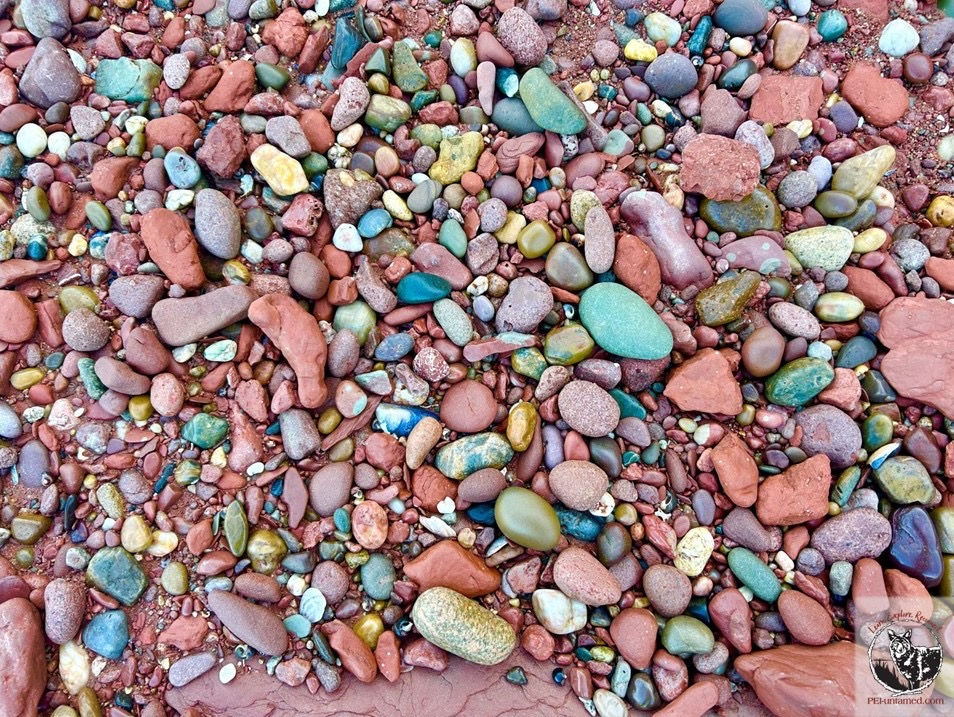Rockhounding on PEI
- katemacquarrie22
- Feb 7, 2024
- 2 min read
You may not think of PEI as a rockhounder’s paradise, but there are interesting geological finds here. Sure, you’re not likely to come across gems and minerals like the agate and stilbite found in Nova Scotia, but we have more than boring old sandstone (spoiler alert: even our sandstone isn’t that boring!).

There are three basic types of rock, and all three can be found along our Island’s shores (Photo 1). Igneous rocks are made from the cooling of hot, liquid rock (magma) and were the first types to form on Earth. There is one spot on PEI where there’s an outcrop of igneous rock (you can read more about that here: https://www.pei-untamed.com/post/permian-to-present-3-iron-rock), but you can find this type of rock scattered all over the Island. The large granite boulders dropped by glaciers during the last ice age are igneous, as are the beautiful granite pebbles that commonly wash up from the mainland (Photo 1, lower right). While granite is the most common igneous example I see on PEI, others – including pebbles of dark basalt and speckled diorite – turn up too.
Over hundreds of millions of years, Earth’s original rocks were weathered and eroded into sediments that could be moved by wind and water. These sediments eventually settled out into layers where time, pressure, and chemistry converted them into stone: sedimentary rock (Photo 1, top). All of PEI’s bedrock is sedimentary, and so the red rocks you find along our shores are local.
Geological forces are tremendously powerful – strong enough to create huge mountains or tilt entire landscapes! Igneous and sedimentary rocks subjected to these extreme forces can fracture, melt, mix, and be transformed into a new type of rock: metamorphic. You can find all sorts of metamorphic rocks along our shores, some brought by glaciers and others washed up from the mainland. They’ll often have veins running through them (Photo 1, lower left), as well as parallel layers cemented together by high heat and pressure. You’re likely familiar with metamorphic rock, even if you don’t know it. For example, slate and marble are both metamorphic.
You can find examples of minerals in our rocks, with quartz being the most common. When you see a white line cutting though a rock like a vein of fat through a steak, that’s usually quartz (Photo 2). Quartz liquifies at 1,725C (3,137F), so imagine the conditions under which this rock was split, and molten quartz forced into the crack!

If you’re still not impressed with our local geology, let me leave you with this: PEI is a fantastic place for fossils, with some internationally important finds. From our famous Dimetrodon jawbone found in 1845 to footprints, trackways, and even an entire prehistoric skeleton found in recent years, our Island has made waves in scientific circles. While ground-breaking finds don’t come along every day, fossils of prehistoric plants such as Walchia (Photo 3) are easy to find. If you’re interested in PEI fossils, I highly recommend you check out Prehistoric Island Tours.

Our natural history includes geology and is a fascinating part of PEI untamed!



